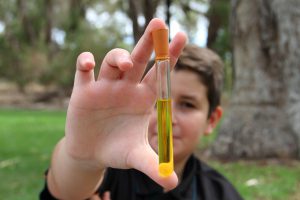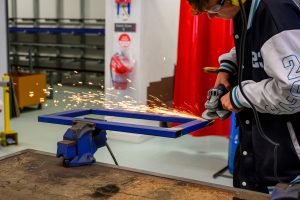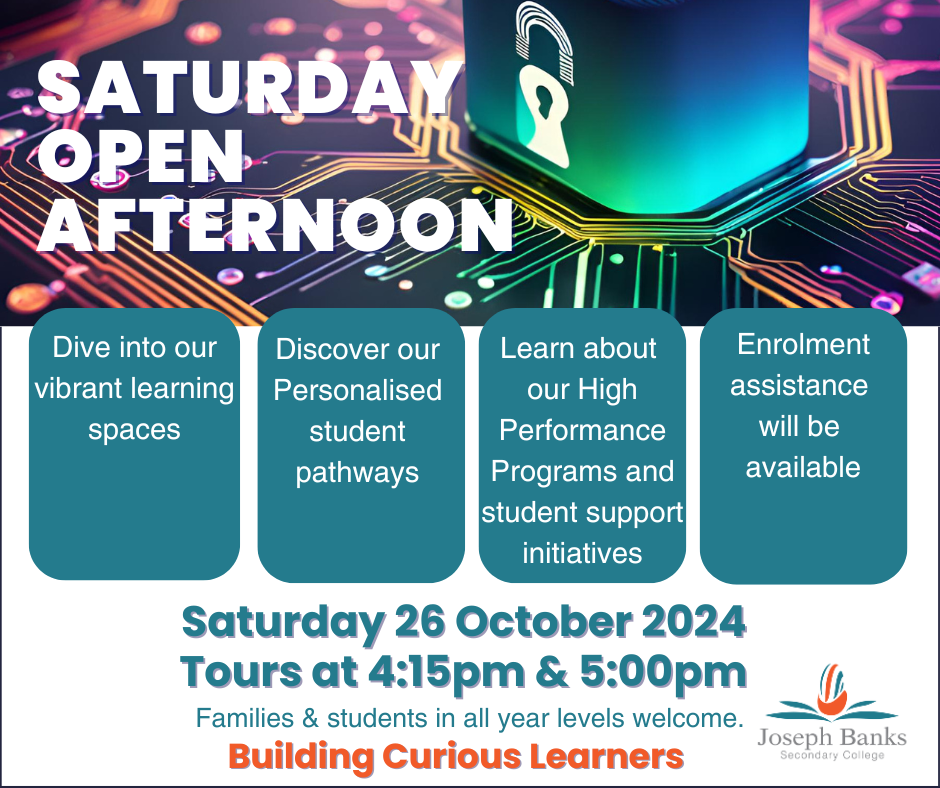Biology (ATAR)
Course Code: AEBLY/ATBLY
Domain: Science
Timetable: Semester 1 and 2
Length of Course: 2 Years
Unit Information
Biology is the study of the fascinating diversity of life as it has evolved and as it interacts and functions.
Investigation of biological systems and their interactions, from cellular processes to ecosystem dynamics, has
led to biological knowledge and understanding that enable us to explore and explain everyday observations,
find solutions to biological issues, and understand the processes of biological continuity and change over
time.
Living systems are all interconnected and interact at a variety of spatial and temporal scales, from the
molecular level to the ecosystem level. Investigation of living systems involves classification of key
components within the system, and analysis of how those components interact, particularly with regard to
the movement of matter and the transfer and transformation of energy within and between systems.
Analysis of the ways living systems change over time involves understanding of the factors that impact on
the system, and investigation of system mechanisms to respond to internal and external changes and ensure
continuity of the system. The theory of evolution by natural selection is critical to explaining these patterns
and processes in biology, and underpins the study of all living systems.
Australian, regional and global communities rely on the biological sciences to understand, address and
successfully manage environmental, health and sustainability challenges facing society in the twenty-first
century. These include the biosecurity and resilience of ecosystems, the health and well-being of organisms
and their populations, and the sustainability of biological resources. Students use their understanding of the
interconnectedness of biological systems when evaluating both the impact of human activity and the
strategies proposed to address major biological challenges now and in the future in local, national and global
contexts.
This course explores ways in which scientists work collaboratively and individually in a range of integrated
fields to increase understanding of an ever-expanding body of biological knowledge. Students develop their
investigative, analytical and communication skills through field, laboratory and research investigations of
living systems and through critical evaluation of the development, ethics, applications and influences of
contemporary biological knowledge in a range of contexts.
Studying the Biology ATAR course provides students with a suite of skills and understandings that are
valuable to a wide range of further study pathways and careers. Understanding of biological concepts, as
well as general science knowledge and skills, is relevant to a range of careers, including those in medical,
veterinary, food and marine sciences, agriculture, biotechnology, environmental rehabilitation, biosecurity,
quarantine, conservation and eco-tourism. This course will also provide a foundation for students to critically
consider and to make informed decisions about contemporary biological issues in their everyday lives.
Year 11
Unit One
The current view of the biosphere as a dynamic system composed of Earth’s diverse, interrelated and
interacting ecosystems developed from the work of eighteenth and nineteenth century naturalists who
collected, classified, measured and mapped the distribution of organisms and environments around the
world. In this unit, students investigate and describe a number of diverse ecosystems, exploring the range of
biotic and abiotic components to understand the dynamics, diversity and underlying unity of these systems.
Students develop an understanding of the processes involved in the movement of energy and matter in
ecosystems. They investigate ecosystem dynamics, including interactions within and between species, and
interactions between abiotic and biotic components of ecosystems. They also investigate how
measurements of abiotic factors, population numbers and species diversity, and descriptions of species
interactions, can form the basis for spatial and temporal comparisons between ecosystems. Students use
classification keys to identify organisms, describe the biodiversity in ecosystems, investigate patterns in
relationships between organisms, and aid scientific communication.
Through the investigation of appropriate contexts, students explore how international collaboration,
evidence from multiple disciplines and the use of ICT and other technologies have contributed to the study
and conservation of national, regional and global biodiversity. They investigate how scientific knowledge is
used to offer valid explanations and reliable predictions, and the ways in which scientific knowledge
interacts with social, economic, cultural and ethical factors.
Fieldwork is an important part of this unit. Fieldwork provides valuable opportunities for students to work
together to collect first-hand data and to experience local ecosystem interactions. In order to understand
the interconnectedness of organisms, the physical environment and human activity, students analyse and
interpret data collected through investigation of a local environment. They will also use sources relating to
other Australian, regional and global environments.
Unit Two
The cell is the basic unit of life. Although cell structure and function are very diverse, all cells possess some
common features: all prokaryotic and eukaryotic cells need to exchange materials with their immediate
external environment in order to maintain the chemical processes vital for cell functioning. In this unit,
students examine inputs and outputs of cells to develop an understanding of the chemical nature of cellular
systems, both structurally and functionally, and the processes required for cell survival. Students investigate
the ways in which matter moves and energy is transformed and transferred in the processes of
photosynthesis and respiration, and the role of enzymes in controlling biochemical systems.
Multicellular organisms typically consist of a number of interdependent systems of cells organised into
tissues, organs and organ systems. Students examine the structure and function of plant and animal systems
at cell and tissue levels in order to describe how they facilitate the efficient provision or removal of materials
to and from all cells of the organism.
Through the investigation of appropriate contexts, students explore how international collaboration,
evidence from multiple disciplines and the use of ICT and other technologies have contributed to developing
understanding of the structure and function of cells and multicellular organisms. They investigate how
scientific knowledge is used to offer valid explanations and reliable predictions, and the ways in which
scientific knowledge interacts with economic and ethical factors.
Students use science inquiry skills to explore the relationship between structure and function by conducting
real or virtual dissections and carrying out microscopic examination of cells and tissues. Students consider
the ethical considerations that apply to the use of living organisms in research. They develop skills in
constructing and using models to describe and interpret data about the functions of cells and organisms.
Year 12
Unit Three
Heredity is an important biological principle as it explains why offspring (cells or organisms) resemble their
parent cell or organism. Organisms require cellular division and differentiation for growth, development,
repair and sexual reproduction. In this unit, students investigate the biochemical and cellular systems and
processes involved in the transmission of genetic material to the next generation of cells and to offspring.
They consider different patterns of inheritance by analysing the possible genotypes and phenotypes of
offspring. Students link their observations to explanatory models that describe patterns of inheritance and
explore how the use of predictive models of inheritance enables decision making.
Students investigate the genetic basis for the theory of evolution by natural selection through constructing,
using and evaluating explanatory and predictive models for gene pool diversity of populations. They explore
genetic variation in gene pools, selection pressures and isolation effects in order to explain speciation and
extinction events and to make predictions about future changes to populations.
Through the investigation of appropriate contexts, students explore the ways in which models and theories
related to heredity and population genetics, and associated technologies, have developed over time. They
investigate the ways in which science contributes to contemporary debate about local, regional and
international issues, including evaluation of risk and action for sustainability, and recognise the limitations of
science to provide definitive answers in different contexts.
Students use science inquiry skills to design and conduct investigations into how different factors affect
cellular processes and gene pools; they construct and use models to analyse the data gathered; and they
continue to develop their skills in constructing plausible predictions and valid, reliable conclusions.
Unit Four
In order to survive, organisms must be able to maintain system structure and function in the face of changes
in their external and internal environments. Changes in temperature and water availability, and the
incidence and spread of infectious disease, present significant challenges for organisms and require
coordinated system responses. In this unit, students investigate how homeostatic response systems control
organisms’ responses to environmental change – internal and external – in order to survive in a variety of
environments, as long as the conditions are within their tolerance limits. Students study changes in the
global distribution of vector-borne infectious diseases. They consider the factors that contribute to the
spread of infectious disease and how outbreaks of infectious disease can be predicted, monitored and
contained.
Through the investigation of appropriate contexts, students explore the ways in which models and theories
of organisms’ and populations’ responses to environmental change have developed over time. They
investigate the ways in which science contributes to contemporary debate about local, regional and
international issues, including evaluation of risk and action for sustainability, and recognise the limitations of
science to provide definitive answers in different contexts.
Students use science inquiry skills to investigate a range of responses by plants and animals to changes in
their environments; they construct and use appropriate representations to analyse the data gathered; and
they continue to develop their skills in constructing plausible predictions and valid conclusions.
Pathway Information
Tertiary
Workforce
Students undertaking this course may wish to consider tertiary studies in:
- Environmental Science
- Biology
This course suits direct workforce entry into the following:
- Laboratory Worker
- Conservation
- Agriculture
Additional Information
Estimated Charges: $70 per year





